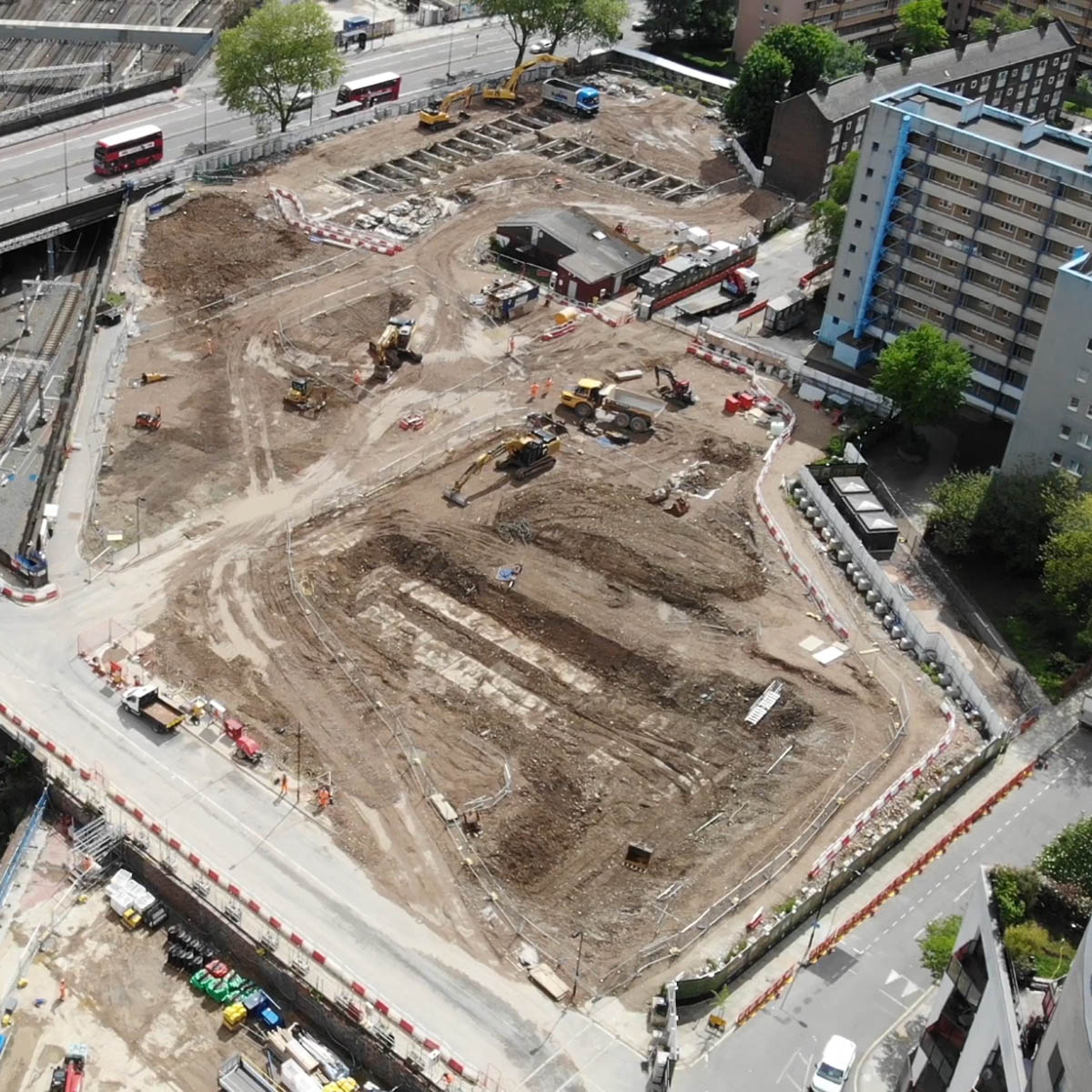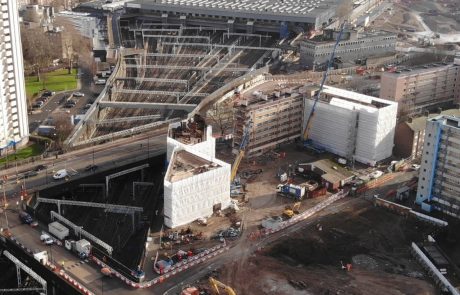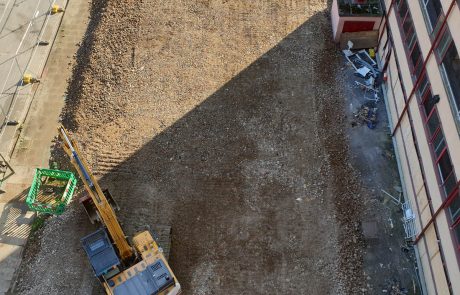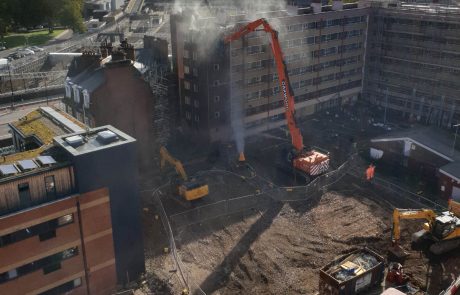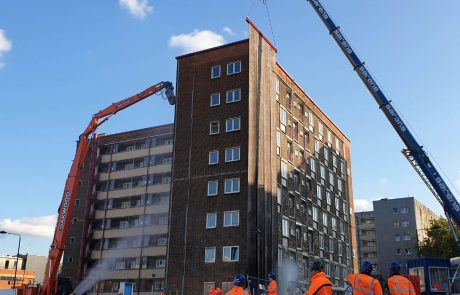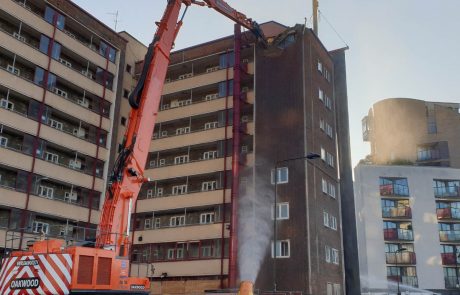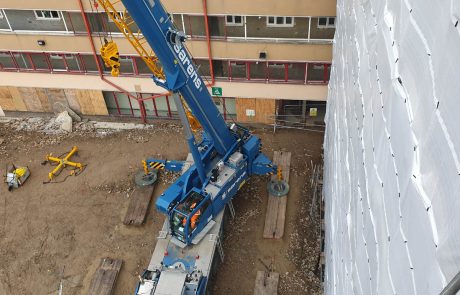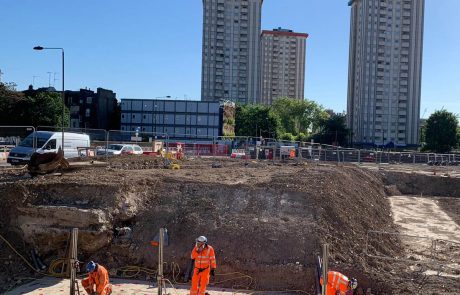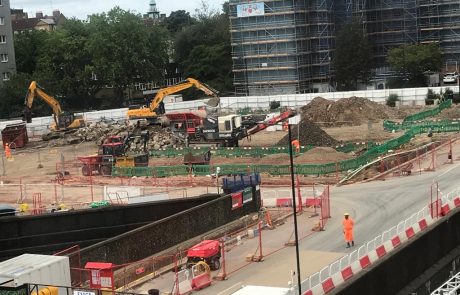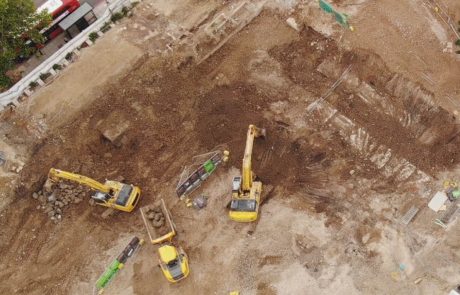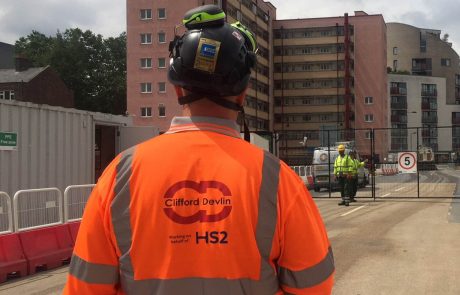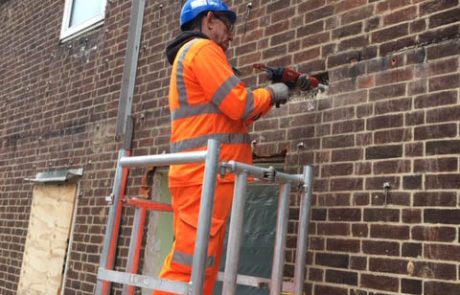Client: Costain-Skanska JV
Value: £7.5 million
Duration: 13 months
Location: London NW1
Following a thorough compliance and due-diligence exercise Clifford Devlin was invited to join HS2's demolition framework in 2018.
Subsequently we won a mini-tender to carry out enabling works for the development of the Euston terminus which involved asbestos removal, soft-strip, structural demolition of six residential blocks (Eskdale, Ainsdale, Silverdale, Granby, Stalbridge and Old Tenants Hall in the Regent's Park Estate), removal of sub-structures and levelling of the sites in readiness for the HS2 Main Works build phase.
Surveys had identified extensive asbestos contamination in all of the buildings which required fully controlled (licenced) and semi-controlled methods to remediate it. Over 21-weeks Clifford Devlin's Asbestos Division carried out the decontamination removing asbestos containing materials (ACMs) such as floor tiles, asbestos insulating board (AIB) in risers and panelling and textured coatings.
To reduce programme the strip-out phase was carefully planned to enable it to be carried out concurrently with the asbestos removal. Teams from our Demolition Division removed partition walls, M&E plant and infrastructure, external insulation and other fixtures and fittings from the buildings to prepare them for structural demolition which took place on a block-by-block basis with different methodologies selected based on the location and structures of each building.
Proximity to the live rail line required Stalbridge House front elevation to be scaffolded under a Network Rail possession and subsequently deconstructed carefully on a floor-by-floor basis during normal working hours. In March 2020 Clifford Devlin was awarded a 5-star audit during its recertification against rail industry standard RISQS which enables us to undertake work in trackside locations.
We devised an innovative approach to the demolition of the Eksdale and Silverdale blocks. In collaboration with CSJV we designed and specified a 26 metre x 6 metre curtain screen that could be suspended from a mobile crane to contain debris and with a built-in water mist spray to supress dust. This enabled us to use long-reach machinery to demolish the buildings which helped reduce programme, eliminated the environmental impact of the vehicle movements (fuel consumption and pollution that would have been required to build a scaffold) as well as reducing the health and safety risks of working at height.
The other buildings were demolished using a combination of high-reach and floor-by-floor deconstruction techniques. Where possible we employed long-reach excavators combined with the use of exclusion zones fitted with motion sensors to maintain strict segregation. Asbestos debris was found under the two of the blocks requiring us to remove 400 cubic metres of contaminated spoil. Also, the demolition phase revealed that the blocks were set on solid 3m deep concrete foundations reaching depths of six metres into the ground. The correct removal technique had to be implemented to overcome the deep excavations and manage the noise and dust constraints.
To overcome the working parameters we introduced diamond drilling techniques to dismantle the deep concrete foundations, with 680 core holes being drilled and burst to enable the foundations to be carefully deconstructed and then processed for crushing on site. All crushed demolition arisings were tested in accordance with the works information and passed for reuse on the project. These unforeseen challenges added 4 months to programme and generated an additional 10,000 tonnes of hardcore waste material.
Working closely with the principal contractor and HS2 we were able to minimise the disruption caused by the Covid-19 pandemic. Works were halted for 4 weeks in March 2020 while risk assessments were carried out and new safe working methods developed and implemented. By restructuring the sequence of works and employing social distancing on-site by staggering shifts and creating more site parking to reduce the use of public transport we were able to re-start works safely in April 2020.
A target of >95% recovery and recycling were set for the wastes generated by this project. Over thirty thousand tonnes of hardcore was crushed on-site to 6F2 standard for use in the build phase. All other wastes were segregated on-site and removed to local facilities for recycling.
The site was bounded on all sides by busy artillery roads, occupied residential and retail buildings. Our plans, therefore, to reduce disruption and environmental impact of the works on the local community were key to our selection for this project. A traffic management plan including proposals for vehicular access, primary traffic routes, use of banksmen/traffic marshals and wheel washing facilities was developed with CSJV and submitted to Camden Council for approval during the lead-in phase.
Application of water spray via water-atomising plant supressed emissions of dust and maintained air quality which was monitored along with noise and vibration throughout to ensure emissions stayed within agreed limits. Clifford Devlin's management team also fully collaborated with CSJV in stakeholder liaison including attending community meetings and regular newsletter drops to keep the local community informed of progress throughout the 13-month project.
Testimonial:
We require our enabling works contractors to be flexible and understanding of the myriad of constraints under which we need to operate, especially in a mainly residential area of London. The Clifford Devlin project team were able and willing to devise creative and innovative solutions to address two key issues – reducing risks of working at height and minimising noise pollution. Their endeavours enabled us to deliver a solution that dramatically reduced the impact on our staff's and surrounding communities Health, Safety and Environment, in this extremely challenging location.
Thomas Cleary, Project Manager HS2, Costain-Skanska JV


